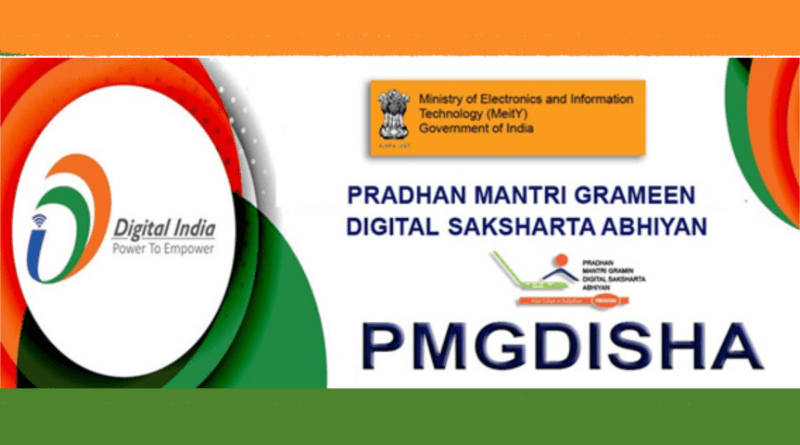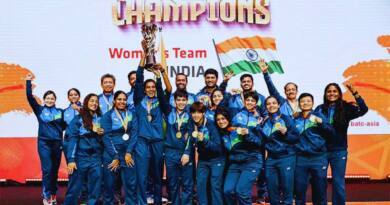LATEST: Know India’s digital abilities in the digital realm
Over the past ten generations, digitalization has played a significant role in the national agenda. A $1 trillion digital economy will be established by 2025–2026 as part of the Prime Minister’s “Digital India Goals 2026” initiative. Technology is an essential component of our daily lives, even as individuals.
In order to participate effectively in contemporary society, one needs to possess digital skills in addition to being able to compete in the workforce. In a post-pandemic environment, SDG 4.4.1—which is about young people’s digital literacy skills—has emerged as a crucial competency target that may also determine the options open to them in the future.
Given India’s vast and expanding population, one of the keys to achieving the long-awaited demographic dividend may lie in the youth’s level of digital literacy. To foster greater digital literacy and give its inhabitants more authority over how they manage their lives through technology, the Indian government began its flagship Digital India initiative in 2015.
The Pradhan Mantri Gramin Digital Saksharta Abhiyan (PMGDISHA) was launched in 2017 in response to the government’s recognition of the digital literacy gap between rural and urban areas. This grant programme seeks to provide at least one member of eligible rural family households with functional skills training in areas including device setup, internet surfing, and subsequent usage for a variety of real-world applications. The PMGDISHA course arrangement places a strong emphasis on digital literacy using a variety of technologies, which include not only workstations but also mobile devices such as tablets, smartphones, and keypad phones with Internet access.
Since it teaches the participants how to look up crop prices, weather patterns, college courses, or job vacancies, as well as how to book railway and bus tickets online, the curriculum gives priority to applications that are pertinent to the agricultural majority who live in rural India. A vital component of the Indian federal government’s goals for digitalization is highlighted in the programme as well: digital payments.
Due to the current existence of these kinds of national-level initiatives, procedures are needed to evaluate the existing state of digital literacy across the nation and monitor its growth over time. Without any data, it can be difficult to determine which digital skills should be emphasised and to develop focused interventions.
Some information about this was provided by the Multiple Indicator Survey (MIS), which was published in March by the Ministry of Statistics and Programme Implementation. Data on the population’s competency with technology for communication and information (ICTs) served to highlight the significance of digital skills. The MIS does, nevertheless, not allow for any firm conclusions to be drawn about the sheer number of individuals who have the capability of accomplishing these tasks, despite the fact that it offers insightful information about people’s level of understanding of digital technology.
The ICT abilities indicated by MIS ranged from fundamental abilities like transmitting a file, pasting and copying information, and utilising spreadsheets and email to more sophisticated abilities like computer programming. The poll was self-reported, meaning that respondents were asked if they could complete these tasks as opposed to being judged on their capacity to exhibit these competencies. With this style of presentation, there are fundamental issues. Self-reported ICT tests have a history of underestimating competency levels, making it challenging for one to determine the precise number of individuals capable of successfully performing these tasks (Palczyska and Rynko, 2021).
The G20 also established a toolbox for digital literacy the previous year. This document promotes the creation of a standard definition of digital literacy for G20 members, including India, so they can build plans and assessments for their individual national digital skills agendas. It is unquestionable that the importance of digital literacy has increased on a worldwide scale. India has the rare potential to establish itself as a leader in digital literacy by creating and putting into practise a comprehensive policy because of its sizeable and expanding youth population.
The initial and most significant phase is gathering accurate and comprehensive statistics on the country’s existing level of digital literacy, particularly among young people.
International literature has rendered it extremely evident that “digital literacy” is not a term that is generally agreed upon. It can only be examined in terms of a group of abilities required to make a contribution to society effectively. The world would have different variations on this. It is advised by Unesco to establish a “minimum level of proficiency” and to test for it. Depending on India’s aims for digital competence, this determined “minimum level of proficiency” could entail different things in different contexts.
In a culture where the explosion of technology is still relatively new, the focus should be placed on accessibility and functional understanding of fundamental activities rather than specialised ones like programming.
An evaluation based on performance that evaluates interviewees’ capacity to really employ digital skills in their daily lives must also be designed and implemented due to the numerous shortcomings of a self-reported format.
It is most suited to accurately measure the population’s skills, even though there might be capacity limitations in operating a large-scale, dependent on performance, digital evaluation. The level of smartphone penetration in India has been demonstrated by numerous household surveys.
As a perfect example, the Annual Status of Education Report (ASER) 2022, a comprehensive, inclusive study, revealed that over seventy percent of all families in rural India now possess smartphones, a number that has more than doubled in only the four years preceding this one.
India consequently needs to make an investment in creating an evaluation system that offers a thorough grasp of the nation’s present levels of digital literacy so that it can direct the formulation and implementation of policy.




